
A hand painted, and then digitally coloured and finished horror picture of a Liverpool (and English) folk tale witch, Ginny Greenteeth. (43 x 32cm / c. A3).
The nightmare is here: Meet Ginny Greenteeth. (sometimes Jenny) She’s the witch that my dad told us about as kids, as we drove along Muirhead Avenue, in Liverpool. It enlivened the trip through the suburbs and ignited my young imagination. It does now too. She lived by a marshy place on a green, and all of the children were warned to “Keep away from that place… Or Ginny Greenteeth will get you.”
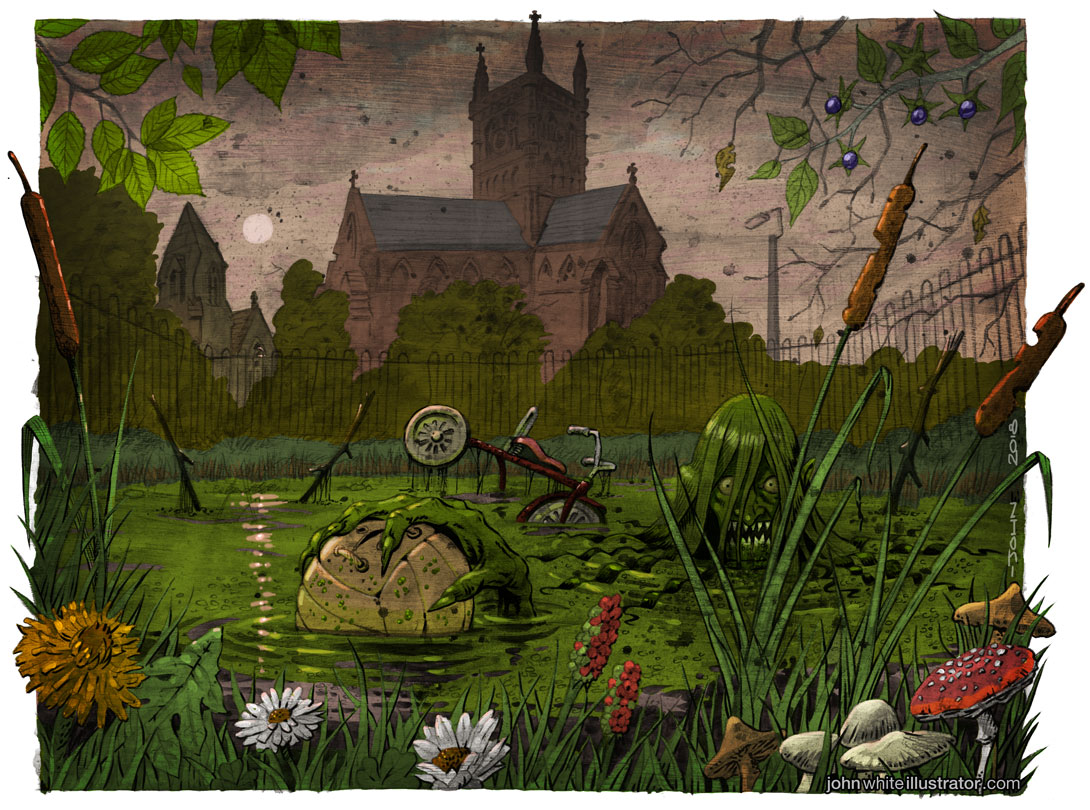

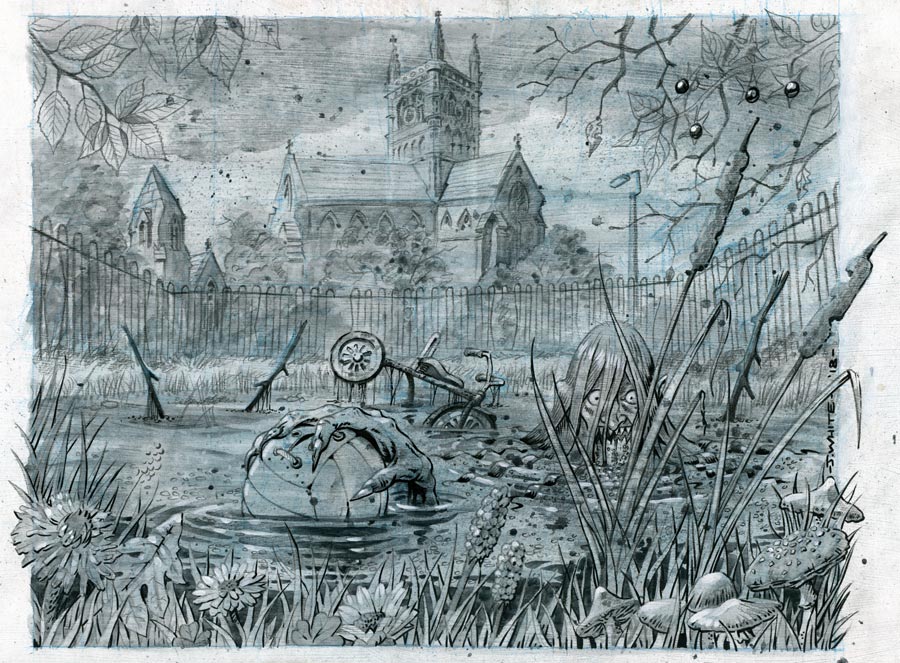
More Background Info
Behind the railings—with a little geographic artistic license—is the old primary school and the red sandstone Anglican church in West Derby village. The village is about 5 minutes walk away from the pool where Ginny reputedly lived. My grandparents’ ashes are interred in the church grounds, and my granny and aunties went to the school on Meadowbrook lane. My auntie, who was naturally left-handed, would be punished for writing with her left hand by being shut up alone in the school’s pointed tower.
I always imagined that Ginny was a classic witch, with a black cape and pointed hat; but reading more online about this folk/fairy tale character who crops up across England, she appears more often to be a pond-hag who lived in the water. Children who strayed too close, unaccompanied by their parents would be grabbed by Ginny’s very long arms and pulled under the water.
Apparently Liverpool Echo newspaper featured a photo of a statue that was dug up on St. James’ Mount, when excavations we underway to build the Anglican Cathedral there. A woman with outstretched and very long arms, she was painted green. The statue’s current whereabouts are unknown.
Process
I didn’t really want Ginny to be the first thing the viewer sees. A painting of ‘An Old Woman Burning Leaves’ by Frank O’Meara and other waterside paintings of his, were in my mind as I thought about this image, but I soon realised that I didn’t want her to be the focus, like the O’Meara’s figures.
I wanted the viewer to see a lovely foreground, then the ball, then Ginny—as a child would. I didn’t want the shock to be immediate.
I love the work of O’Meara, and many of the other painters working at Grez Sur Long in Brittany, who were influenced by Bastien LePage’s ‘grey lit’ images. I got some of that grey light into this, especially the background, and the misty pinkish sun is very much influenced by O’Meara’s painting Revierie 1882. I still could resist a lot of colour saturation elsewhere in the image though. Once that rich, glorious colour is there, it’s hard to then kill it.
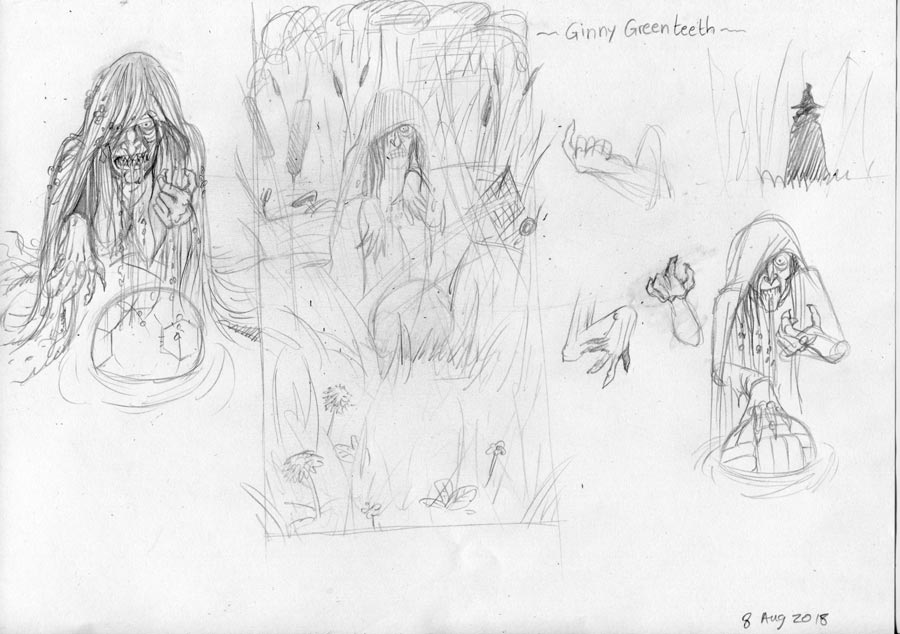
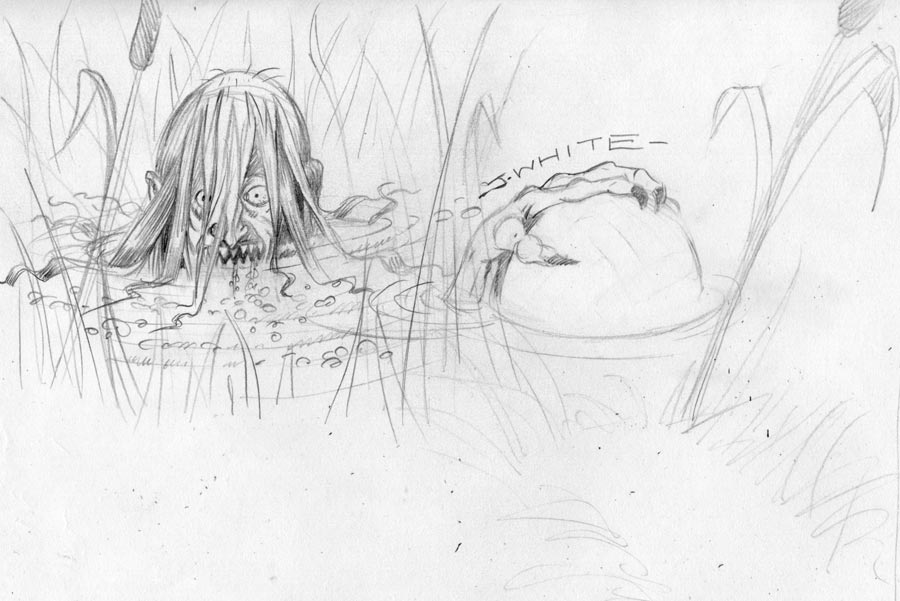
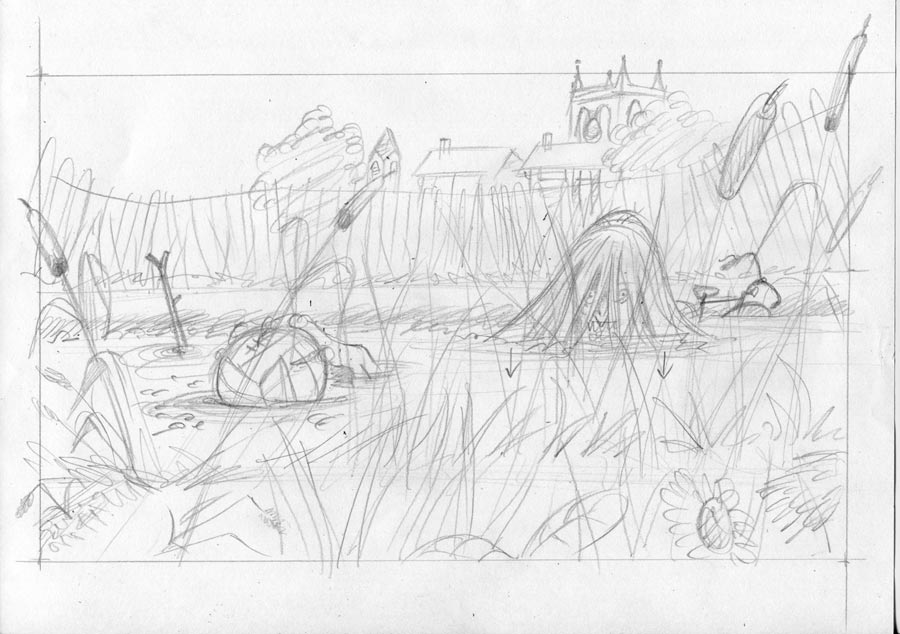
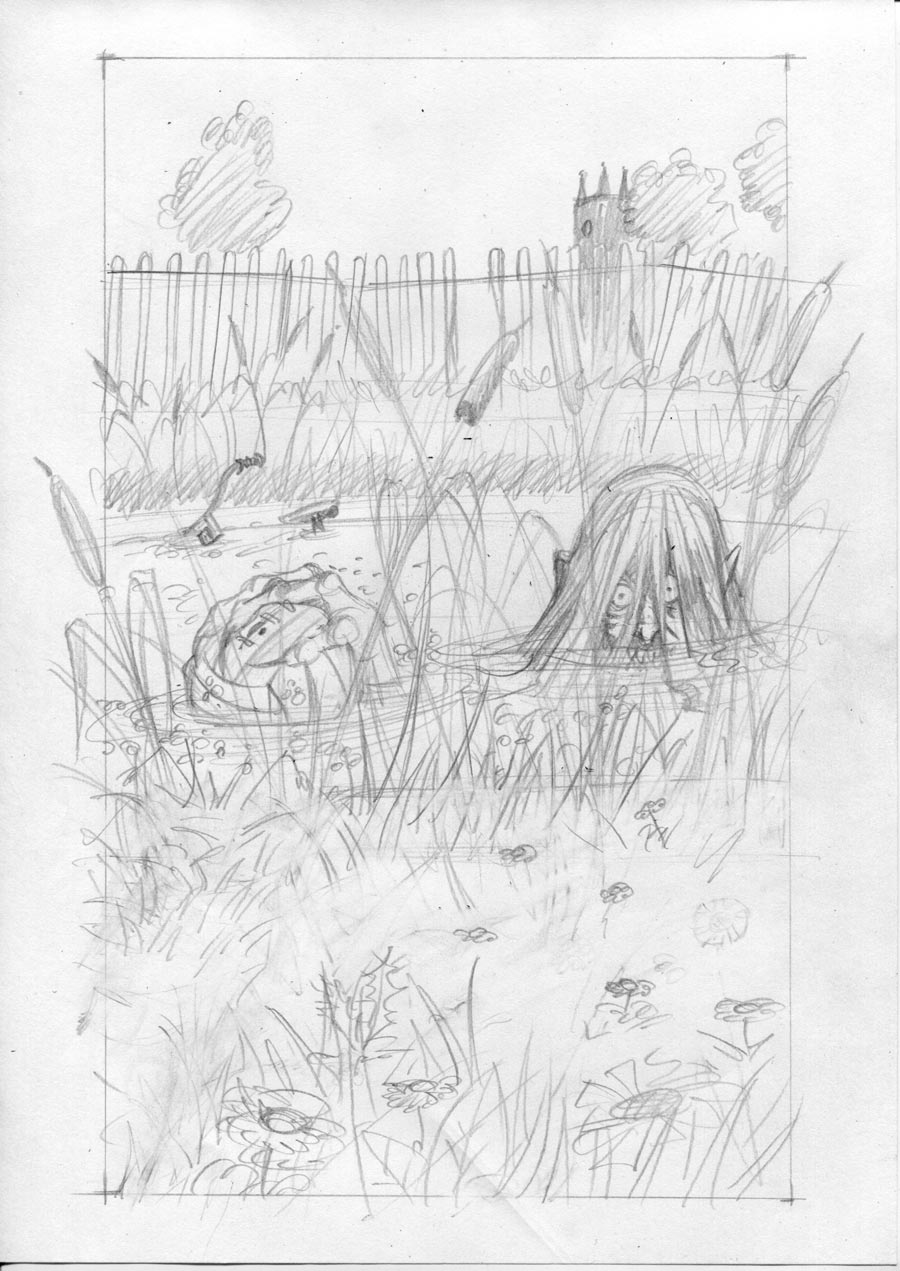
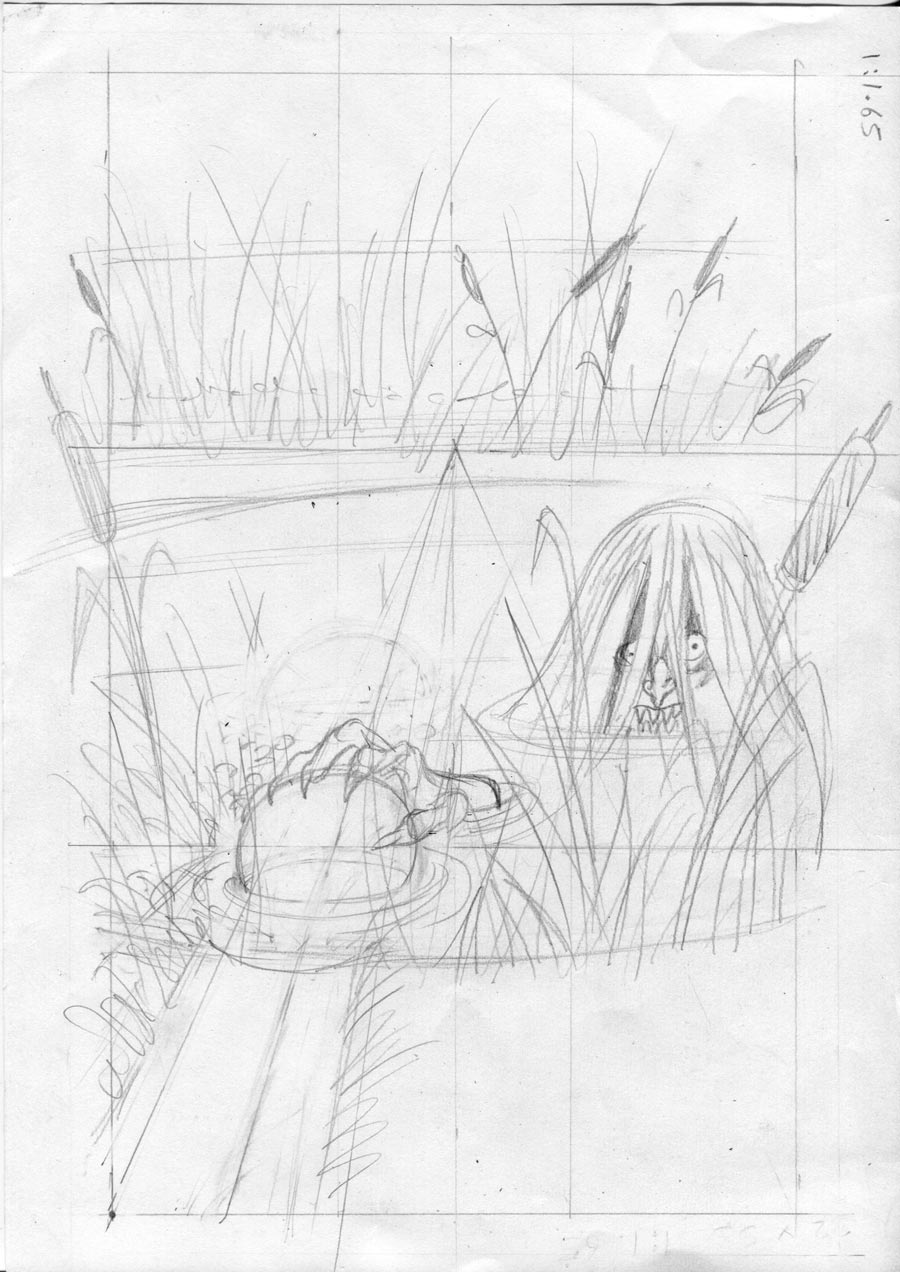
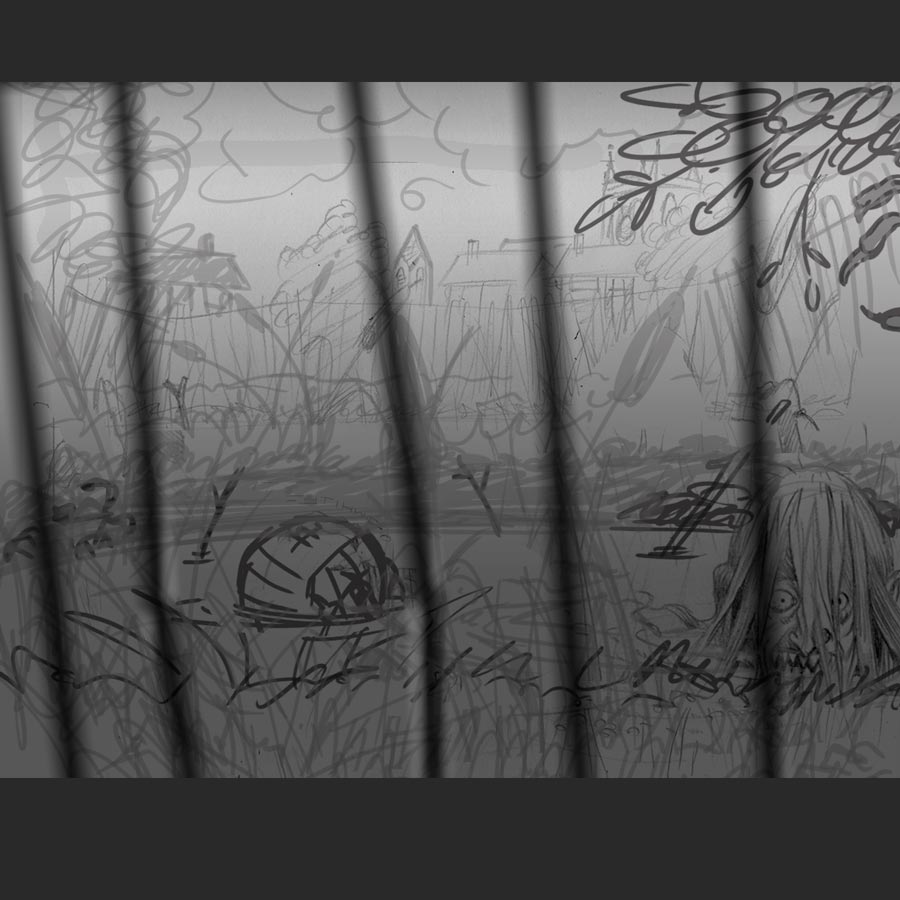
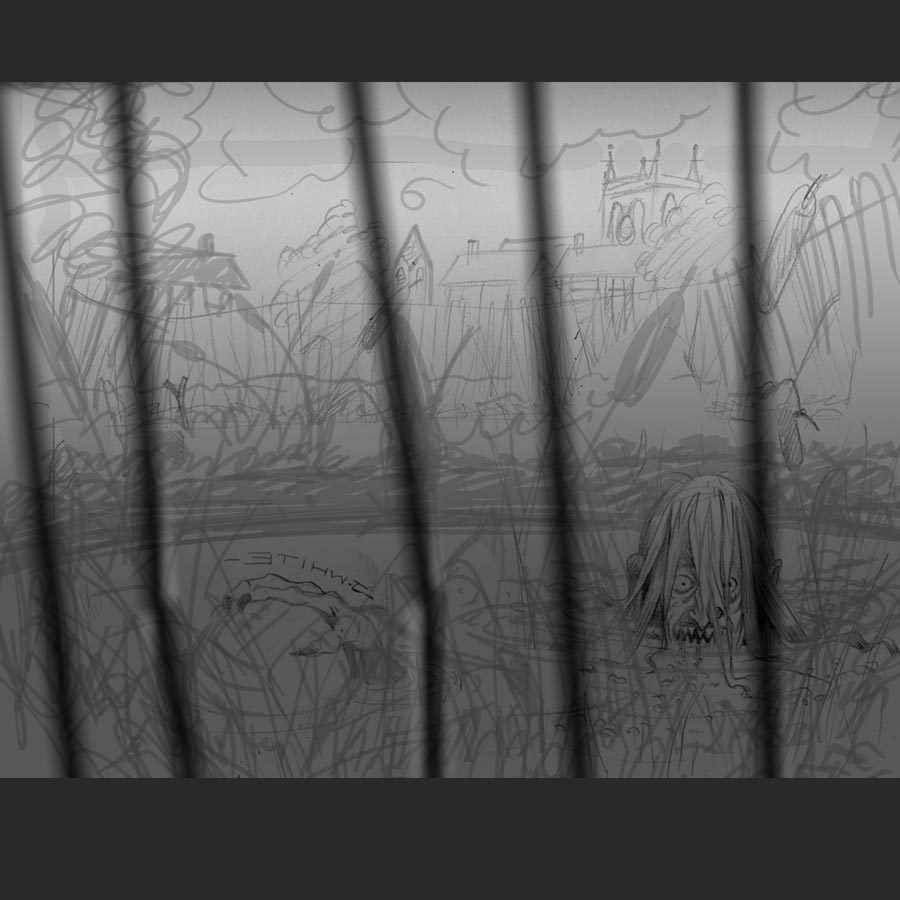
The ball and bicycle are 1950’s style. The streetlamp is based on the type still seen around Norris Green. I sketched in some houses, but then dropped them. I was thinking more of my dad’s late 1940s/50s childhood than my own 1970s one.
The botany in this gets progressively more dangerous form left to right. Dandelions “Don’t touch them, or they’ll make you wet the bed!” daisies and clover feature on the left, then on the right near Ginny we have poisonous fungi such as: Death Cap, Panther Cap, Deadly Web Cap, Destroying Angel, Fly Agaric, Poison Pie; and poisonous plants such as: Arum Maculatum and Deadly Nightshade. The trees are also defoliated from left to right.
And I think we’ve all leaned over water holding out long sticks to prod or retrieve things?


Detail Images
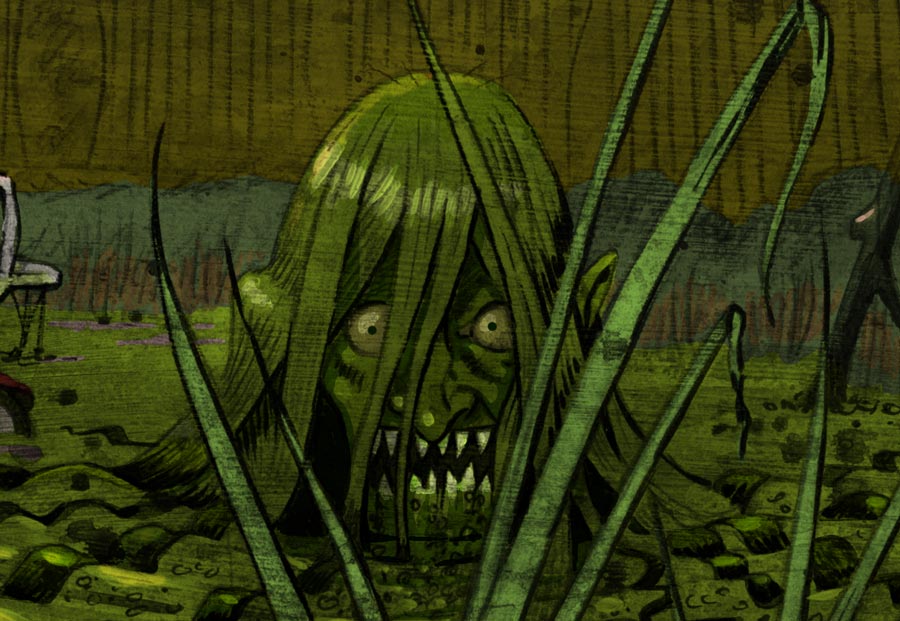
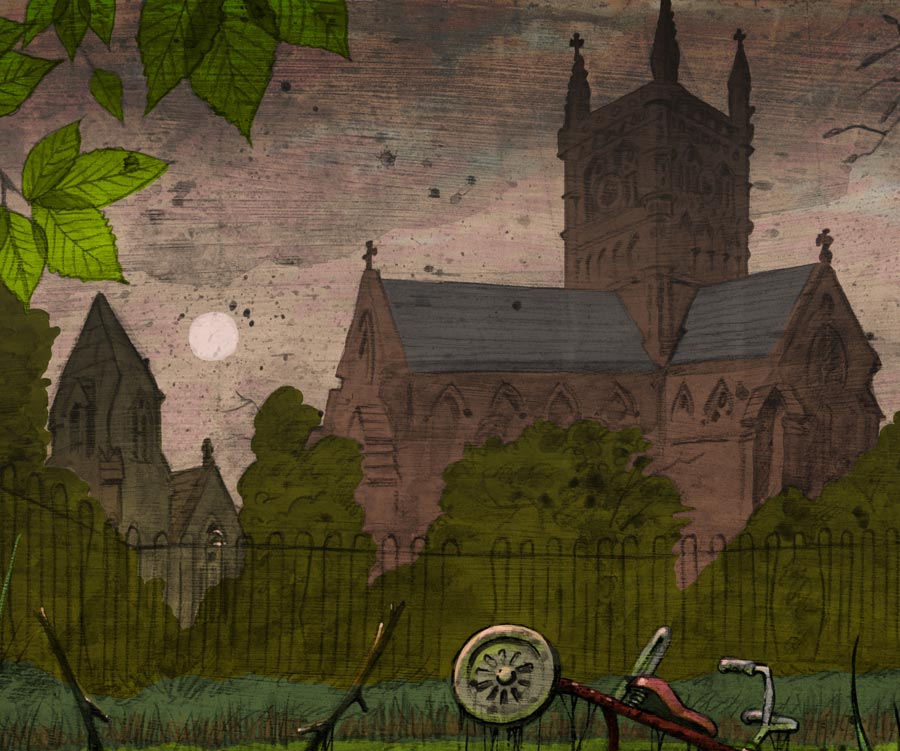
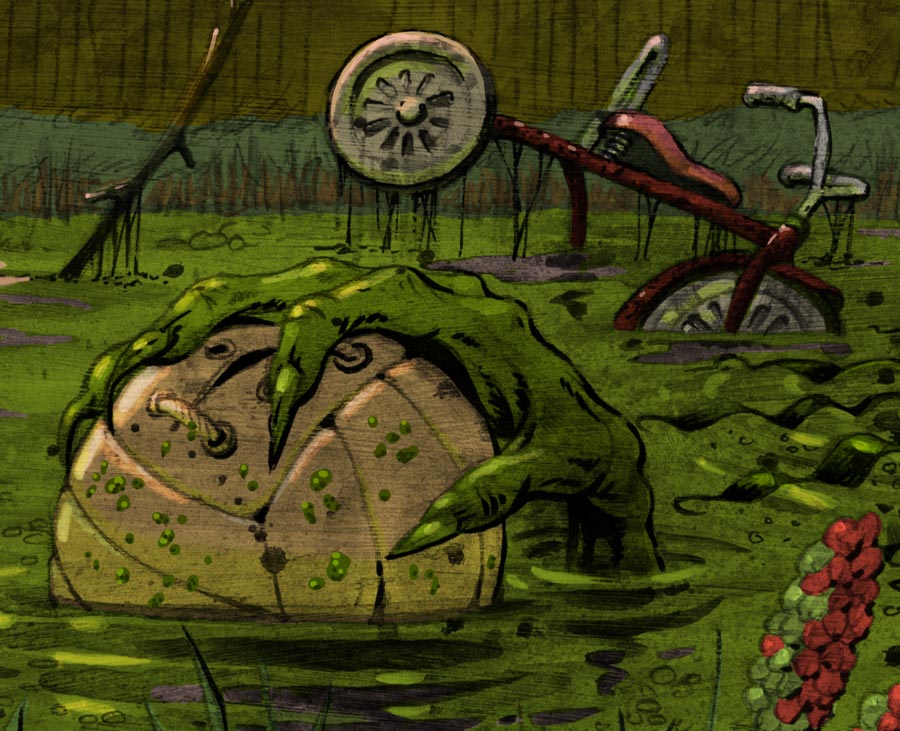
Illustrator: John White
Painting: Goauche, ink, pencil, on board
Colouring: Photoshop

My young brother was taken/ drowned in the Leeds to Liverpool canal, this was in the 1960s, to this day I still believe that it was ginny greenteeth that lured and took him into the water, that day never far from my mind as with all of my family,
Hello Brian,
I’m very sorry to hear about the tragic loss of your brother. I can’t even imagine how that feels for you all.
And thank you for stopping by and sharing your story.
Best regards,
John